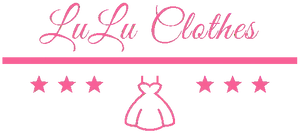As a boutique owner, one of your main goals is to offer unique and high-quality clothes to your customers while ensuring your business remains profitable.
An important aspect of achieving this balance is to understand the wholesale pricing. Knowing how wholesale pricing works can help you make informed decisions about which products to stock and how to price them effectively
What is Wholesale Pricing?
Wholesale pricing is the cost you pay to buy products from wholesalers (often manufacturers or suppliers) in bulk. It's always lower than the retail price—the price at which you'll sell these items to your customers.
Why is Wholesale Pricing Important?
Understanding wholesale pricing helps you:
- Set the right retail prices
- Make a profit
- Stay competitive in the market
- Manage your inventory better
How Wholesale Pricing Works
Typically, wholesalers offer products at a discount from the suggested retail price. For example, if a dress has a suggested retail price of $100, you might buy it wholesale for $50.
However, this isn't a fixed rule. Wholesale prices can vary based on:
- The type of product
- The quantity you buy
- Your relationship with the supplier
- Market conditions
Factors That Affect Wholesale Prices
Minimum Order Quantity (MOQ): Some suppliers require you to buy a minimum number of items. Usually, the more you buy, the lower the price per item.
Seasonality: Prices may change based on the time of year. For instance, winter coats might be cheaper to buy in the spring.
Market Trends: If a product is in high demand, its wholesale price might go up.
Your Buying History: Regular customers often get better prices.
How to Calculate Your Retail Price
Once you know the wholesale price, you need to decide your retail price. Here's a simple formula:
Retail Price = Wholesale Price ÷ (1 - Markup Percentage)
For example, if you want a 60% markup on a $50 wholesale item:
Retail Price = $50 ÷ (1 - 0.60) = $125
This means you'd sell the item for $125, making a $75 profit.
Tips for Negotiating Wholesale Prices
Build Relationships: Get to know your suppliers. You can get great deals from the wholesaler if you have a good relationship.
Buy in Bulk: If you can, order larger quantities to get lower prices.
Pay on Time: Reliable payment can earn you discounts.
Ask About Discounts: Don't be afraid to ask if there are any special offers or discounts available.
Compare Prices: Check prices from different suppliers before making a decision.
Common Mistakes to Avoid
Focusing Only on Prices: The cheapest option isn't always the best. Consider quality and reliability, too.
Overbuying: Don't order more than you can sell. Unsold inventory ties up your money.
Underpricing: Make sure your retail price covers all your costs and leaves room for profit.
Ignoring Terms and Conditions: Read the fine print. Know about return policies, shipping costs, and payment terms.
Managing Your Wholesale Purchases
Keep Track of Your Inventory: Know what's selling well and what's not.
Plan Ahead: Order seasonal (such as summer collections or winter apparel) items in advance.
Stay Informed: Keep up with market trends and adjust your buying accordingly.
The Impact of Wholesale Pricing on Your Business
Understanding wholesale pricing can make or break your boutique. It affects:
- Your profit margins
- The variety of products you can offer
- Your ability to compete with other stores
- Your overall business strategy
Better know that it's not about buying products at cheap rates and selling them at high rates. It's about finding the right balance between quality, price, and what your customers want.
Wholesale pricing might seem tricky at first, but with knowledge of pricing and understanding the calculations, you'll get better at it. Keep learning, stay flexible, and don't be afraid to ask your wholesalers questions

